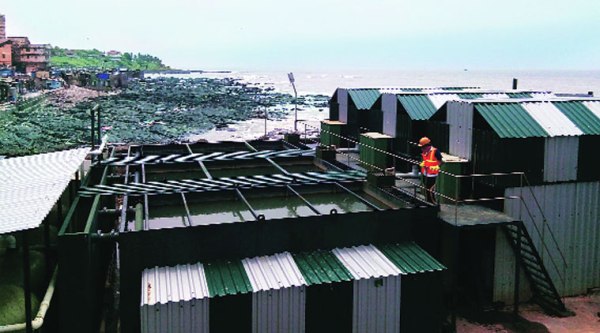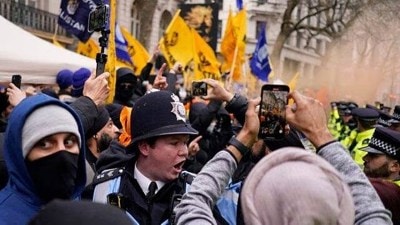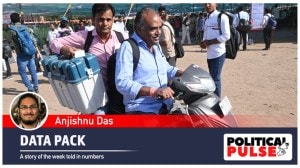- India
- International
Water from Banganga plant goes down the drain into sea
Water supply and sewerage operations departments have been passing the buck over a distribution network.
 Banganga sewage treatment plant.
Banganga sewage treatment plant.
The treated water from the recently commissioned Banganga sewage treatment plant (STP) can cater to the water usage of around 11,000 people per day, but lack of a distribution network and issues between the water supply and sewerage operations (SO) department over the network means that this treated and disinfected water is simply discharged into the sea.
Around 1.5 million litres per day (MLD) sewage from the neighbouring Walkeshwar is treated at the satellite pumping station in Banganga since May. With the Brihanmumbai Municipal Corporation’s (BMC) water supply department providing an average of 135 MLD per person per day, recycled water from this STP can provide for the non-portable water usage of around 11,000 people.
“If the distribution network is in place, we can save 1.5MLD portable water that is now used for non-portable purposes. Especially when there is water scarcity due to insufficient rainfall, such recycled water will lessen the load on portable water supply,” said a senior official from the sewerage operations department. “We provide tertiary treatment and disinfection through ozonation at the Banganga plant. The treated water has BOD less than 5mg/lt,” he added.
However, the water supply and the SO departments have been passing the buck on building the distribution network, thus, delaying the process.
The SO department claimed that treated water would have confirmed customers such as Raj Bhavan gardens, Kamala Nehru Park, Priyadarshini park and gardens within ministers’ bungalows. “Building a STP plant is not an issue, but distribution is a major issue.

Water supply department is better equipped and experienced in the field of water distribution. We have even provided the preliminary study, comprising distribution plan for this area, to them. Our work is to treat sewage water, but distribution is a little beyond our scope” said an official of the SO department, who did not wish to be named.
However, the HE department maintained that unless there were fixed customers and a policy to charge for the water supply, laying pipelines would be a futile exercise. “We handle water supply for the entire city and have a fixed tariff and steady customers. One of the major hurdles is to find consumers who will buy recycled water from BMC for non-portable uses.
Raj Bhavan and some parks may be assured customers, but with buildings, it may not be the case. We need proper systems in place before we go ahead with laying pipelines, especially in a city where underground utilities are not even mapped,” said a senior official from the water supply department, who did not wish to be named. “We have given our remarks to the SO department and suggested that they go ahead with the distribution network,” he added.
Meanwhile, Assistant Municipal Commissioner (projects) Rajiv Jalota assured that tenders would be floated by November. “Water supply department will do the distribution network. The departments had mutual issues, but the tenders will be floated by November,” said Jalota.
At present, the city has seven sewage pumping stations — Colaba, Worli, Bandra, Versova, Malad, Ghatkopar and Bhandup — where sewage undergoes primary treatment and is discharged into sea or creek.
anjali.lukose@expressindia.com
Apr 26: Latest News
- 01
- 02
- 03
- 04
- 05








































